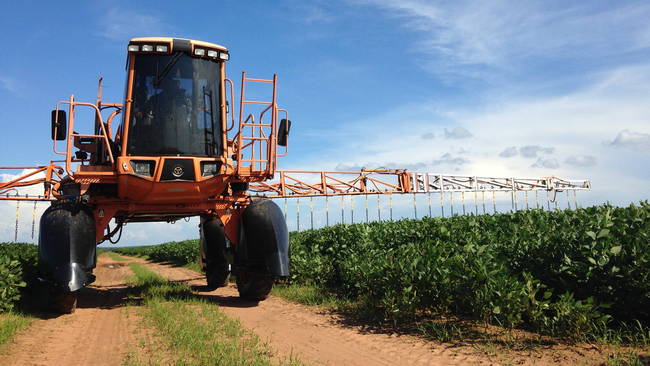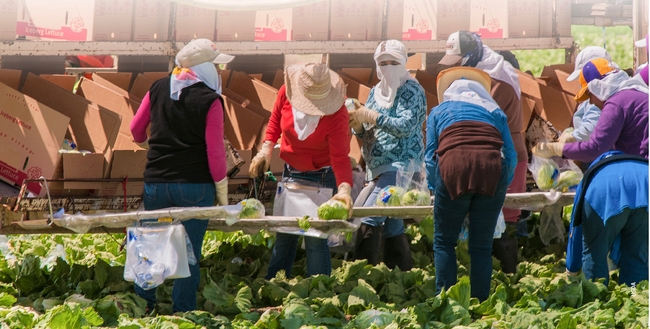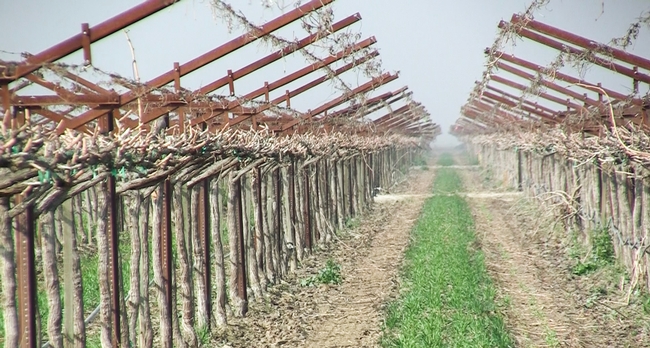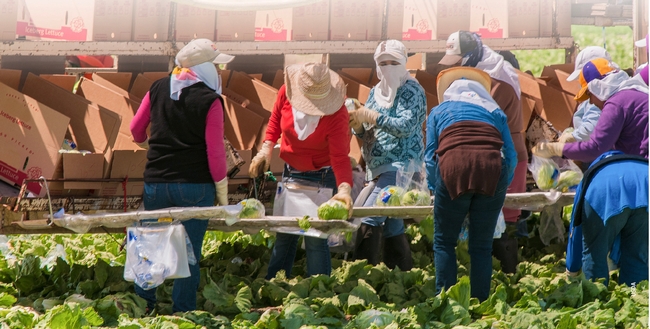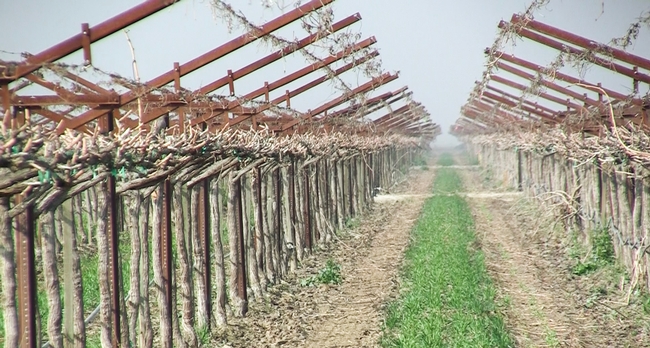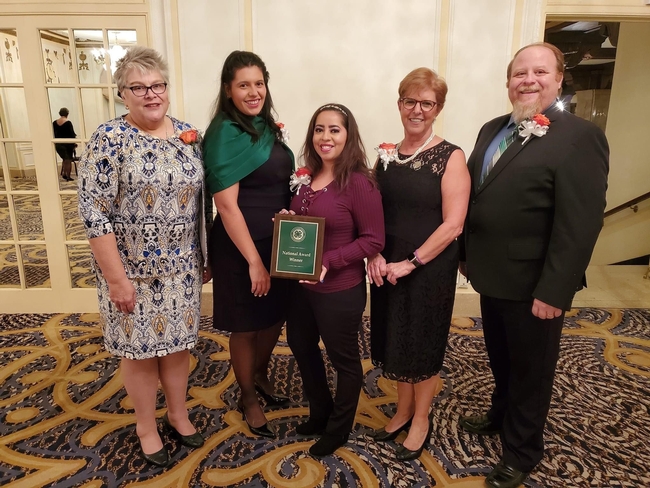- Adaptado al español por: Ricardo A. Vela
Ampliada de cuatro a 12 capitulos, la tercera edición de Seguridad en el uso de Pesticidas: Un manual de estudio para aplicadores privados pretende ser más que una simple guía de estudio.
El manual, disponible para su compra en inglés y en español, proporciona muchos más detalles sobre los procesos y procedimientos esenciales que ayudarán a mantener seguros a los aplicadores mientras usan pesticidas, así como a reducir los impactos ambientales de la aplicación incorrecta.
Publicado por University of California Agriculture and Natural Resources en colaboración con el Departamento de Regulación de Pesticidas del estado, el manual, destinado a los miembros de la comunidad agrícola que poseen, administran o trabajan en granjas que usan pesticidas de uso restringido, también incluye actualizaciones sustanciales.
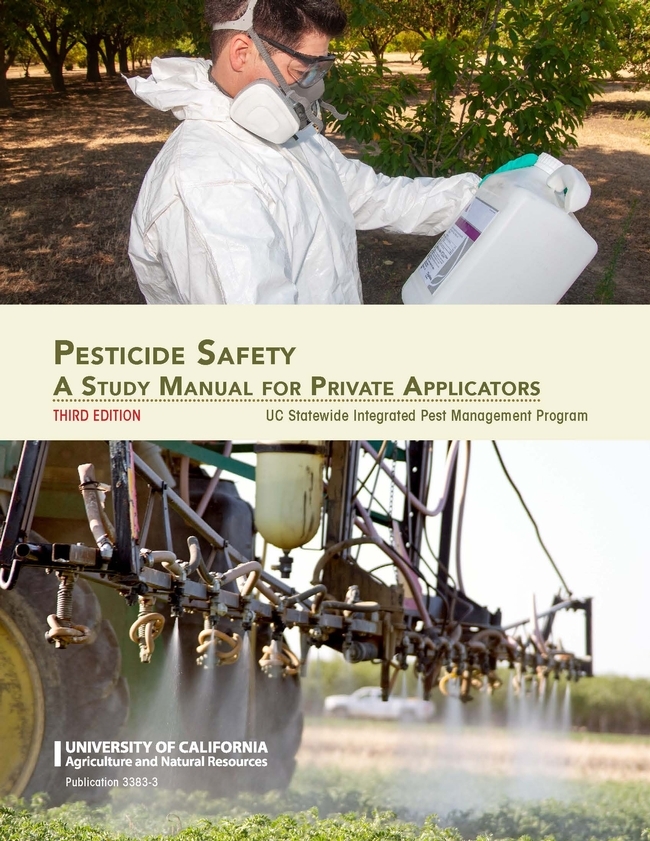
El nuevo manual refleja cambios importantes en las regulaciones federales y estatales desde la publicación de la edición anterior en 2006.
"Hay actualizaciones regulatorias significativas que lo ayudan a mantenerse al día con las reglas y estándares de seguridad, y protegen a sus trabajadores de la sobreexposición a los pesticidas", dijo Lisa Blecker, editora técnica de la publicación y actualmente educadora de seguridad de pesticidas en la Universidad Estatal de Colorado.
Además de enfatizar las ramificaciones ecológicas más amplias del uso inadecuado de pesticidas, el manual incluye información sobre temas que podrían tener poca importancia en otros manuales, como la calibración correcta del equipo para garantizar la precisión de la aplicación.
"Todo eso está ahora en el libro y completamente desarrollado", dijo Whithaus. "[Los aplicadores] van a poder hacerlo de manera mucho más efectiva usando el nuevo libro, en comparación con el anterior, fue realmente difícil ser exhaustivo en 80 páginas".
La nueva edición, que suma más de 200 páginas sustantivas, también presenta un diseño más simplificado y fácil de usar modelado a partir de una publicación hermana, The Safe and Effective Use of Pesticides, escrita para aplicadores comerciales.

Destacó las "expectativas de conocimiento" enumeradas al principio de cada capítulo y en los márgenes del libro, junto a los pasajes relevantes. Las declaraciones sirven como "señales visuales" para ayudar a los lectores a aprender y retener el material que necesitan para aprobar el examen de certificación de California DPR para aplicadores privados.
Y si bien el manual funciona como una ayuda de estudio mejorada para propietarios, gerentes y trabajadores que aplican pesticidas, funciona como una referencia a la que pueden recurrir en los próximos años.
"Va a poder servir como un manual de referencia, en lugar de solo una guía de estudio", dijo Whithaus. "Realmente podrás usar este libro como una herramienta para ayudarte a mejorar en la gestión de tu tierra".
El manual, que se cotiza en $29, está disponible para su compra en inglés en https://anrcatalog.ucanr.edu/Details.aspx?itemNo=3383 y en español en https://anrcatalog.ucanr.edu/Details.aspx?itemNo=3394.
- Author: Norma De la Vega
- Adapted to English by: Ricardo A. Vela
Today, amid a pandemia-battered labor market and a deep crisis across the food industry chain, it is crucial to reduce barriers to employment and pay attention to the problem of sexual harassment. This problem occurs most often in low-paying, male-dominated jobs such as agriculture.
Recent research from the Division of Agriculture and Natural Resources at the University of California UC ANR found that 30 percent of female workers at nine wine industry companies in Napa Valley reported some form of sexual harassment at their current job. They are young women under the age of 40, several temporary employees who usually work in small groups throughout the camp where sexist and hostile jokes and comments are frequently heard.

- Sexual harassment in agriculture is a historically neglected problem that is gaining economic relevance in the current context of agriculture, an industry dealing with labor shortages.
- The lack of a workforce is a severe problem, considered by several experts as the main challenge in food production.
- The shortage of male migrant workers would be even worse without increasing the female workforce.
"Women need to feel safe to be productive, and with the critical lack of labor in agriculture, this industry needs to make sure it retains these workers," Hobbs said.
Research indicates that between 40 and 75 percent of all working women in this country have experienced some form of sexual harassment, and this has not decreased since the 1980s. Even worse, the problem often occurs in low-paying jobs that men dominate.
Sexual harassment is unwanted behavior that the victim perceives as offensive that threatens their well-being. "It's a barrier that not only harms the victim but other workers at the company, and I should add that sexual harassment is not something that happens only to women but also to men, but this was not the focus of our study," Hobbs said.
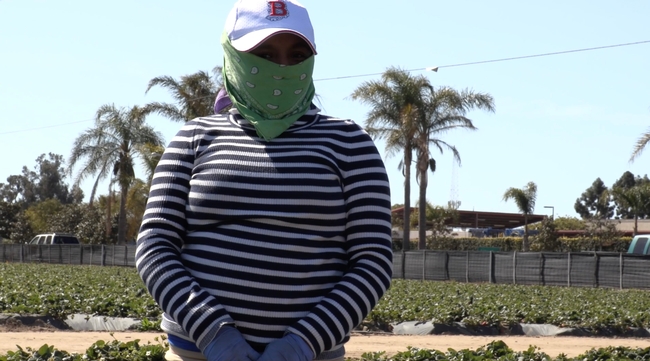
- Gender-based harassment – jokes, comments, or suggestive stories that are offensive, or different treatment for being a woman (contempt or ignoring the woman)
- Unwanted sexual attention – requesting a date or inviting drinks even though you were told NO. Touching or groping the person.
- Sexual coercion – bribing the employee in exchange for engaging in sexual behavior (offering a promotion in exchange for a sexual favor)
- Hostile Sexism - comments or acts that are interpreted by women as sexist (for example: "Women are easily offended"; "women do not appreciate everything that men do for them"; "Women exaggerate the problems they have at work."
In agriculture, labor shortages are not a new problem. Since before the pandemic, they have been present and have been reduced thanks to the increase in women workers.
In 2017, Napa Valley vineyards employing an average of 100,000 workers had a shortage of 12 percent workers, and this would have been worse without the workers. "More women are working than there were 20 years ago, and this change in the gender of workers that I describe in Napa is also happening to some degree on the California Coast," he says.
The research highlights that between 2013 and 2016, the proportion of working women increased in Napa Valley vineyards from 10 to 25 percent.
"The economic motivation is, therefore, stronger than ever for agricultural companies to reduce barriers to employment and retain female workers, and sexual harassment in the workplace is a barrier to employment," Hobbs says. These women are indispensable to fill the vacancies that used to be filled by immigrant workers that have declined in recent years."
The research involved 195 men and 100 women, all Hispanics. The nine companies surveyed have more than 50 employees each; in seven of them, subcontracted labor is used, and in 2 vineyards, their employees are directly employed. The survey was conducted in English and Spanish. Of the 30 percent of women who reported experiencing sexual harassment, 9 percent said unwanted sexual attention and 1 percent sexual coercion.
"The fact that harassment is more prevalent among young women is an indicator that harassment is an obstacle to expanding the workforce because they are women who are starting to work," he said.
He explained that the relatively low percentage of sexual harassment found in this research compared to other research could be because the wine industry usually offers better wages and better working conditions than other workplaces.
Hobbs concludes that this research is an approach to a complex labor problem that requires more attention, and possibly the next step will be to analyze the overall work environment, addressing the hostile sexist attitudes of workers and evaluating the entire organization, which seems to be the most promising thing to reduce harassment in agriculture. "The conditions in which the workers are currently working makes them more vulnerable, the training help, but there are changes that must be executed. Changes have to be made throughout the organization," concluded the expert.
Additional resources:
This investigation was carried out thanks to the collaboration of the Western Center for Agricultural Health and Safety at the University of California, Davis, offers all kinds of training on agricultural safety. An integral part of this report was a podcast where Teresa Andrews, the Center's Education and Community Outreach Specialist, talks extensively about what harassment is, what the law says about harassment, and what to do when you have been bullied. Here's the link to the podcast.
- Author: Norma De la Vega
En la actualidad en medio de un mercado laboral golpeado por la pandemia y una crisis profunda en toda la cadena de la industria alimentaria, es crucial reducir las barreras al empleo y prestar atención al problema del acoso sexual, un problema que se presenta con más frecuencia en empleos de poca paga que son dominados por los hombres como es la agricultura.
Una investigación reciente de la División de Agricultura y Recursos Naturales de la Universidad de California UC ANR encontró que 30 por ciento de las trabajadoras en 9 empresas de la industria vitícola en Napa Valley reportaron algún tipo de acoso sexual en su trabajo actual. Son mujeres jóvenes, menores de 40 años, varias de ellas empleadas temporales que suelen trabajar en pequeños grupos a lo largo del campo en donde se escuchan con frecuencia chistes y comentarios sexistas y hostiles.

- El acoso sexual en agricultura es un problema históricamente desatendido que cobra relevancia económica en el contexto actual de la agricultura, industria que está lidiando con escasez de mano de obra.
- La falta de mano de obra es un problema grave, considerado por varios expertos como el reto principal en la producción de alimentos.
- La escasez de trabajadores, migrantes masculinos, sería aún peor sin el aumento de la mano de obra femenina.
“Las mujeres requieren sentirse seguras para ser productivas y con la carencia crítica que se detecta en la mano de obra en la agricultura, esta industria necesita asegurarse de retener a estas trabajadoras”, aseveró Hobbs.
Investigaciones indican que entre 40 y 75 por ciento de todas las mujeres que trabajan en este país han sufrido algún tipo de acoso sexual y esto no ha disminuido desde los 1980s. Aún peor, el problema se presenta con más frecuencia en trabajos de poca paga que son dominados por los hombres.
El acoso sexual es una conducta no deseada que la víctima percibe como algo ofensivo que amenaza su bienestar. “Es una barrera que no solo daña a la víctima sino a otros trabajadores de la empresa y debo añadir que el acoso sexual no es algo que ocurre solo a las mujeres sino también a los hombres, pero este no fue el enfoque de nuestro estudio.” dijo Hobbs.
He aquí las diferentes formas de acoso sexual:
- Acoso por razón de género – chistes, comentarios o historias sugerentes que resultan ofensivos, o un trato diferente por ser mujer (desprecio o ignorar a la mujer)
- Atención sexual no deseada – solicitar una cita o invitar bebidas a pesar que se le dijo que NO. Tocar o manosear a la persona.
- Coerción sexual – sobornar a la empleada a cambio de que participe en un comportamiento sexual, (ofrecer una promoción a cambio de un favor sexual)
- Sexismo Hostil - comentarios o actos que son interpretados por mujeres como sexistas (por ejemplo: “Las mujeres se ofenden con facilidad”; “las mujeres no aprecian todo lo que hacen los hombres por ellas”; “las mujeres exageran los problemas que tiene en el trabajo”.
En la agricultura, la escasez de mano de obra no es un problema nuevo, se ha registrado desde antes de la pandemia y se ha logrado aminorar gracias al aumento de las trabajadoras.
En 2017, los viñedos de Napa Valley que emplean un promedio de 100 mil trabajadores tuvieron una escasez de 12 por ciento de trabajadores y esto hubiera sido peor sin las trabajadoras. “Hay más mujeres trabajando de lo que había hace 20 años y este cambio en el género de los trabajadores que describo en Napa también está ocurriendo en algún grado en la Costa de California”, asegura el experto.
La investigación resalta que entre 2013 y 2016 la proporción de mujeres trabajadoras aumentó en los viñedos de Napa Valley del 10 a 25 por ciento.
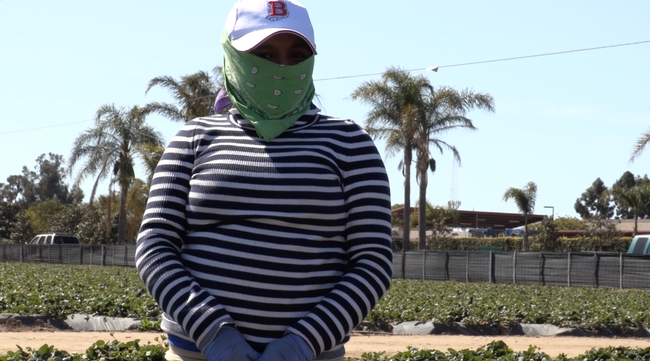
En la investigación participaron 195 hombres y 100 mujeres todos hispanos. Las 9 empresas encuestadas tienen más de 50 empleados cada una, en 7 de ellas se utiliza mano de obra subcontratada y en 2 viñedos se emplea directamente a sus empleados. La encuesta se ejecutó en inglés y español. Del 30 por ciento de las mujeres que reportaron sufrir acoso sexual, 9 por ciento reportaron un tipo de atención sexual no deseada y 1 por ciento de coerción sexual.
“El hecho de que el acoso es más frecuente entre las mujeres jóvenes es un indicador de que el acoso es un obstáculo para ampliar la fuerza laboral pues son mujeres que están empezando a trabajar”, resaltó el experto.
Explicó que el porcentaje relativamente bajo de acoso sexual que se encontró en esta investigación en comparación con otras investigaciones, podría deberse al hecho de que la industria vitícola suele ofrecer mejores salarios y mejores condiciones laborales que otros lugares de trabajo.
Hobbs concluye que esta investigación es un acercamiento a un problema laboral complejo que requiere más atención y posiblemente el siguiente paso será analizar el ambiente laboral en general, abordando las actitudes sexistas hostiles de los trabajadores y evaluando a toda la organización, lo que parece ser lo más prometedor para reducir el acoso en la agricultura. “Las condiciones en que actualmente están trabajando las trabajadoras las hace más vulnerables, los entrenamientos ayudan, pero hay cambios que se tienen que ejecutar, básicamente se tienen que hacer cambios en toda la organización”, concluyó el experto.
Recursos adicionales:
Está investigación se ejecutó gracias a la colaboración del
Centro Occidental para la Salud y Seguridad Agrícola, Western Center for Agricultural Health and Safety de la Universidad de California en Davis, organización que ofrece todo tipo entrenamientos en torno a la seguridad agrícola. Como parte integral de este reporte se elaboró un podcast en donde Teresa Andrews, Especialista en Educación y Alcance a la Comunidad del Centro habla ampliamente sobre qué acoso, y qué indica la ley sobre el acoso y qué hacer cuando se ha sido víctima de acoso. He aquí el enlace al podcast.
- Author: Norma De la Vega
- Translated by: Ricardo Vela
The Latino Initiative team of UC ANR's 4-H youth development program received the national diversity and inclusion award for their outstanding performance in expanding the 4-H program to California's Latino youth. The award was presented at the November annual conference of the National 4-H Association of Extension for Youth Development in Memphis, Tennessee.
The award recognizes their pilot program implemented in eight California counties that generated a 250% growth in the participation of Latino children and adolescents from 2016 to 2019.
“I'm so proud to be associated with this very important work and group of passionate and skilled colleagues.” The Latino initiative has set a strong foundation for expanding this work throughout California to ensure all young people have access to high caliber programming that meets local needs.” Stated Lynn Schmitt-McQuitty, UC ANR Statewide 4-H Director.
Members of the Latino Initiative present included Lupita Fábregas, Claudia Díaz Carrasco, Lynn Schmitt-McQuitty, Russ Hill, and Liliana Vega.
"This week, I am happy to be at the National Conference of the 4-H Extension Association for Youth Development," Claudia Diaz Carrasco, a 4-H advisor in Riverside, wrote on social media after receiving this recognition. "Since 2015, I have been given the opportunity to learn by doing, and I am working to make this world a better place by helping train the next generation."
Before implementing the Latino 4-H Initiative, many Latino parents were unaware of the importance of 4-H. They knew about the youth clubs only from what they saw at county fairs, where children and teens interacted with animals. Parents believed that 4-H was a hobby for those who wished to explore animal life. However, with the time and effort of bilingual and bicultural 4-H experts, more young Latinos have discovered that 4-H is not a hobby but an invaluable opportunity to develop skills that help them succeed in life.
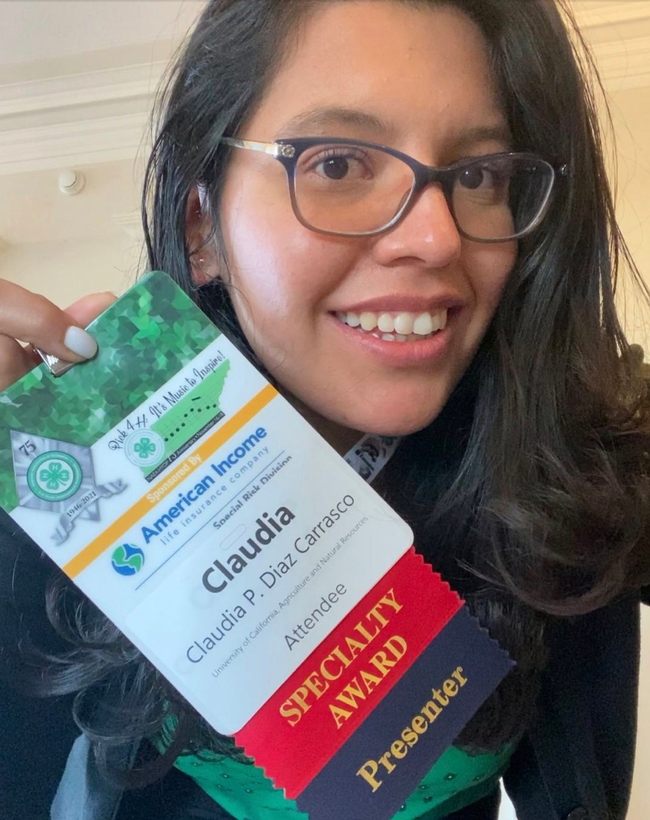
It was then that University of California Agriculture and Natural Resources began to execute profound changes to expand its coverage. The first step was to adapt and develop 4-H content to serve the needs of Latinos and offer its programs to youth in urban areas of California. Afterwards, bilingual, and bicultural experts were hired. More Latino volunteers were recruited to run the pilot program in Kern, Merced, Monterey, Orange, Sonoma, Santa Barbara, and Riverside counties, areas with large Latino populations.
"At first, we didn't know what the program was about," said Jose Sanchez, a Merced County teen who enrolled in 4-H after participating in a cooking class during high school. "My mom and sister came to training. We liked these workshops, and my mom liked that the workshops were in English and Spanish."
Sanchez, who likes mechanics and is interested in engineering-related careers, said that he was presented with the opportunity to be part of “Juntos” at the end of his first year of participation in 4-H. This 4-H program promotes the college experience among Latinos through a multi-day learning visit on the UC Merced campus. That opportunity put university life among his goals. "Living on campus for almost a week was one of my favorite experiences. We learned a lot about careers, life at the university, and I also met new friends," Sanchez said.
Díaz Carrasco added that the sustainability of an initiative like this requires a good strategy accompanied by a large amount of human, cultural, financial resources, and a real and sincere connection with the community. "Locally in Riverside and San Bernardino counties, we have been able to continue building on the foundations of the Latino initiative. I feel privileged because my personal and professional experiences have underpinned this work."
Diaz Carrasco envisions expanding the program over the next five years. "I would like to continue the initial idea of having a Latino 4-H specialist provide the statewide leadership and coordination that is required to continue to expand the Latino initiative. I think that if each county makes a real effort to get to know the Latino community in its geographic area and its specific needs, we will surely find similarities and differences that we can address as a team and thus create programs that are accessible and welcoming to young Latinos."
- Author: Norma De la Vega
El equipo de la Iniciativa Latina del programa de desarrollo juvenil 4-H de UC ANR, recibió el premio nacional de diversidad e inclusión por su sobresaliente desempeño en la ampliación de este programa a la juventud latina de California. Este es un reconocimiento por la creación de un programa piloto implementado en 8 condados del estado Dorado que en un periodo de tres años entre 2016-2019 generó un crecimiento del 250% en la participación de los niños y adolescentes latinos.
Durante la conferencia anual de La Asociación Nacional 4-H de Extensión para el Desarrrollo Juvenil, realizada en la ciudad de Memphis, Tennessee en el mes de noviembre, se entregó este reconocimiento a los integrantes de la Iniciativa Latina presentes: Lupita Fábregas, Claudia Díaz Carrasco, Lynn Schmitt-McQuitty, Russ Hill y Liliana Vega en reconocimiento a la labor ejecutada y que ha permitido que más niños y adolescentes latinos conozcan los beneficios de 4-H.
“Esta semana me siento feliz de estar en la conferencia Nacional de la Asociación de la Extensión 4-H para el Desarrollo Juvenil”, escribió en medios sociales Claudia Díaz Carrasco, consejera en Riverside de 4-H tras recibir este reconocimiento. “Desde 2015, se me ha otorgado la oportunidad de aprender haciendo y yo estoy trabajando para hacer este mundo un mejor lugar ayudado en la formación de la próxima generación”.
Antes de la implementación de la Iniciativa Latina 4-H, varios padres latinos desconocían la importancia de 4-H. Sabían del club juvenil solo por lo que veían en las ferias de los condados, que era niños y adolescentes interactuando con animales. Los padres creían que 4-H era un pasatiempo para quienes deseaban explorar la vida animal. Sin embargo; con el tiempo y el esfuerzo de expertos bilingües y biculturales de 4-H, más jóvenes latinos han descubierto que no se trata de un pasatiempo, sino que de una invaluable oportunidad para desarrollar destrezas que ayudan a tener éxito en la vida.
La Iniciativa Latina de 4-H se formó tras reconocer el enorme cambio demográfico que ha experimentado California en las últimas décadas. En 2014, los estudiantes latinos pasaron a ser el grupo el grupo étnico más numeroso en las escuelas públicas 54 por ciento de los niños eran latinos. Sin embargo; este grupo no estaba participando de manera proporcional en 4-H.
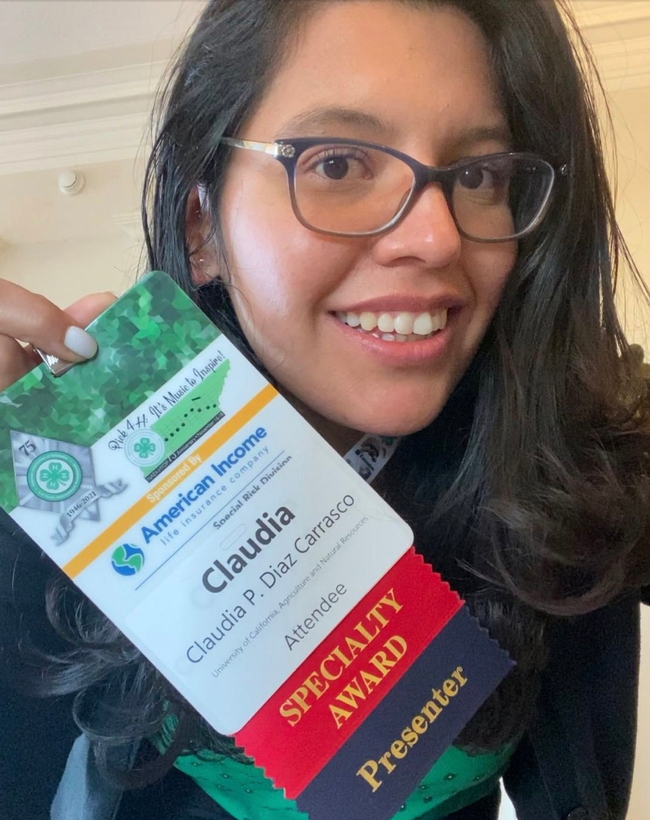
“Al principio no sabíamos de qué se trataba el programa” indica José Sánchez, un adolescente del condado de Merced que se inscribió en 4-H tras participar en una clase de cocina durante la secundaria. “Mi mamá y mi hermana vinieron a los entrenamientos. Nos gustaban estos talleres y a mi mamá le agradó que los talleres eran en inglés y español.”
Sánchez, quien le gusta la mecánica y se interesa por las carreras relacionadas con la ingeniería, dijo que al termino de su primer año de participación en 4-H, se le presentó la oportunidad de ser parte de Juntos, el programa de 4-H que promueve la universidad entre los latinos, a través de una visita de aprendizaje de varios días en el campus de UC Merced. Y esa oportunidad puso entre sus metas la vida universitaria. “Vivir en el campus por casi una semana fue una de mis experiencias favoritas. Nosotros aprendimos mucho sobre las carreras, la vida en la Universidad y además conocí nuevos amigos”, dijo Sánchez.
Díaz Carrasco añade que la sostenibilidad de una iniciativa como esta requiere una buena estrategia acompañada de una gran cantidad de recursos humanos, culturales, financieros, así como una conexión real y sincera con la comunidad. “A nivel local en Riverside y San Bernardino hemos logrado seguir construyendo sobre los cimientos de la iniciativa latina. Me siento privilegiada debido a que mi experiencias personales y profesionales han sustentado este trabajo”.
¿Qué es lo que sigue para la Iniciativa Latina en los próximos 5 años?
“Me gustaría que se continuará con la idea inicial de tener un especialista estatal latino de 4-H que proporcione el liderazgo y coordinación a nivel estatal que se requiere para seguir ampliándonos a otros condados. Pienso que si cada condado hace un esfuerzo real para conocer a la comunidad latina en su área geográfica y sus necesidades específicas, seguramente encontraremos similitudes y diferencias que podemos abordar como equipo y así crear programas que sean accesibles y acogedores para los jóvenes latinos”, concluyó Díaz Carrasco.

